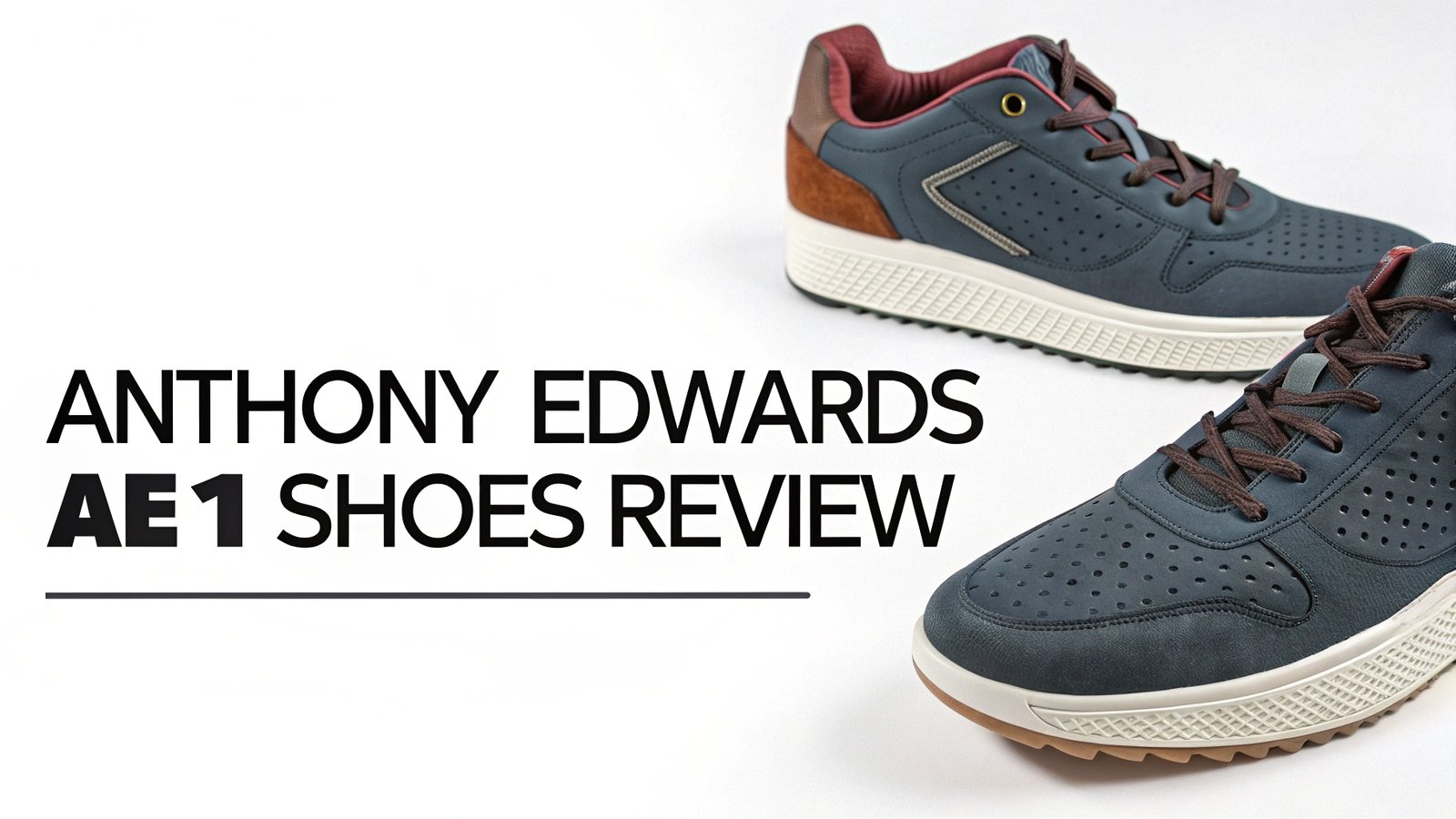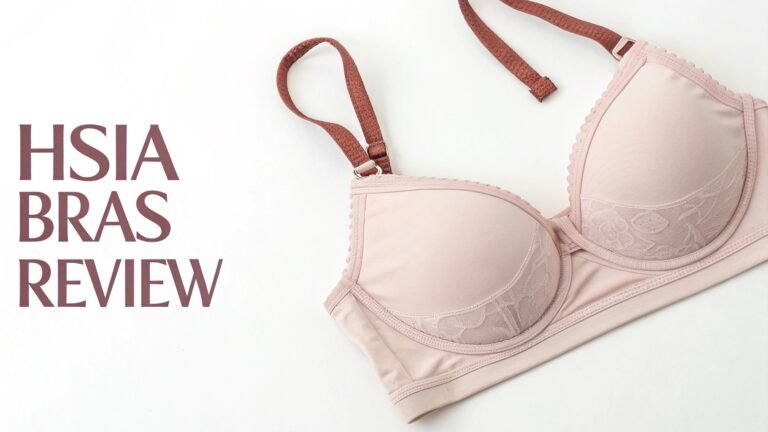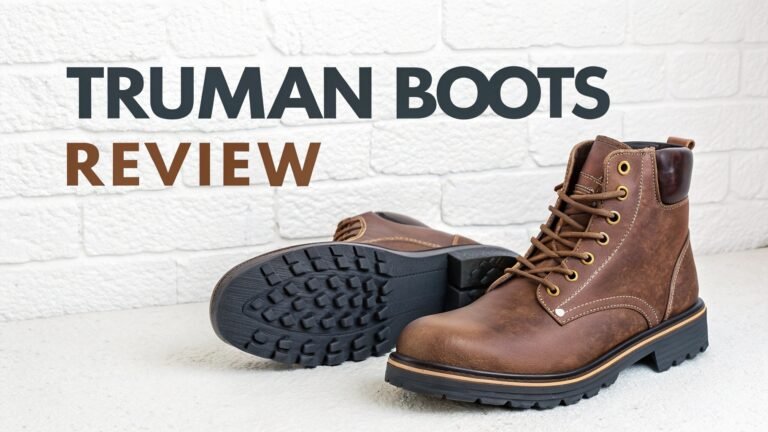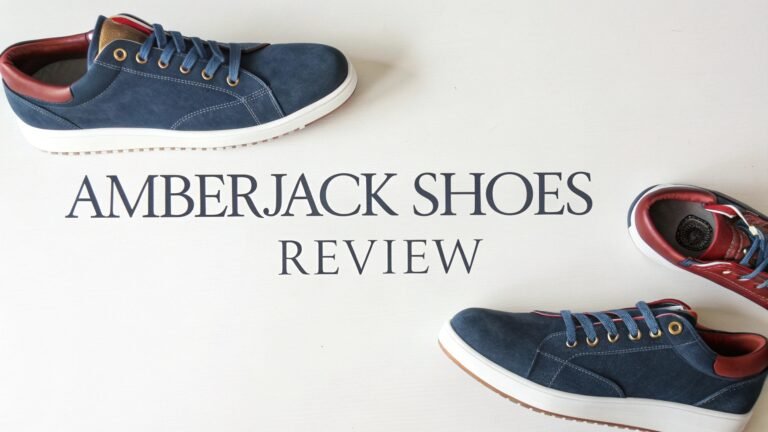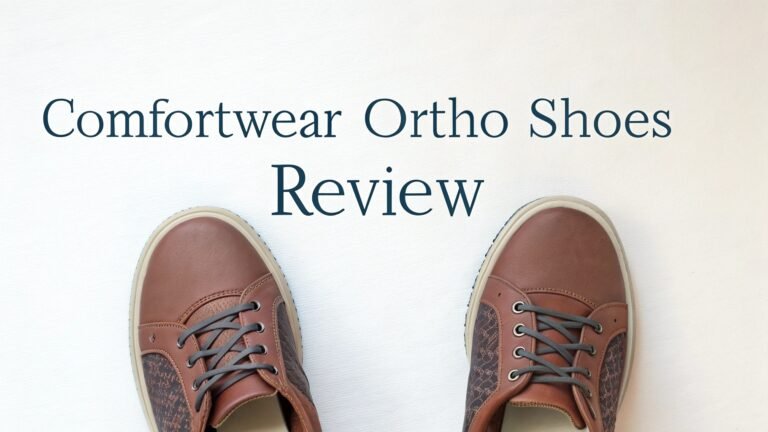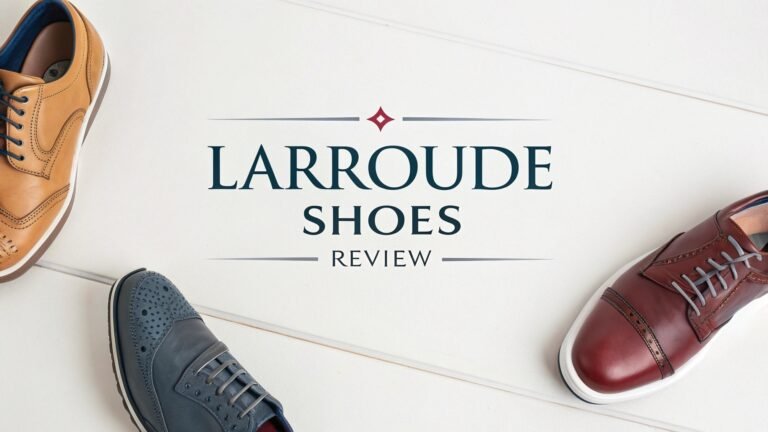Anthony Edwards AE1 Shoes Review: Performance, Style, and Innovation
Basketball shoes are not just footwear; they are tools of the trade that can make or break performance on the court. When Minnesota Timberwolves superstar Anthony Edwards partnered with Adidas to create his first signature shoe, expectations were sky-high.
The AE1 has quickly become one of the most talked-about basketball shoes in the market, capturing attention for its unique design and performance features.
As a rising NBA star known for his explosive playing style, Edwards needed a shoe that could match his intensity and versatility. The AE1 aims to deliver exactly that – a performance-focused basketball shoe that provides the support, comfort, and responsiveness that players demand.

Key Takeaways
- The Adidas AE1 is Anthony Edwards’ first signature shoe with the brand, released at a reasonable price point of $120 for the mid-top version and $110 for the low-top version
- The shoe features elite traction with a full-length herringbone pattern that provides exceptional grip on indoor courts, making quick changes of direction more effective
- Cushioning combines BOOST and Lightstrike technologies in a dual-density setup that offers a balance of impact protection and court feel
- The AE1 weighs slightly more than some competing models but provides excellent stability and support for explosive movements
- Material construction includes a honeycomb TPU wrap that delivers both structure and flexibility while maintaining good ventilation
- The low-top version offers improved comfort and lighter weight compared to the mid-top while maintaining the same performance features
- Multiple colorways are available including the popular “With Love” debut release along with “Pure Ruby,” “Best of Adi,” and various other options
- The shoe requires a short break-in period of about an hour of play to reach optimal performance and comfort
- Not recommended for outdoor use due to the softer rubber compound that may wear down quickly on concrete courts
- The X-Frame spring plate provides torsional rigidity and adds a responsive feel to each step and jump
- Sizing runs slightly long in the mid-top and slightly small in the low-top version, so trying them on before purchase is recommended
- Overall performance makes the AE1 one of the best basketball shoes of 2024-2025, especially considering the reasonable price point
The Rise of Anthony Edwards
Anthony Edwards has quickly established himself as one of the NBA’s brightest stars since being selected as the first overall pick in the 2020 NBA Draft by the Minnesota Timberwolves. Born in Atlanta, Georgia, on August 5, 2001, Edwards played college basketball for the Georgia Bulldogs before making the leap to the professional ranks.
His career trajectory has been nothing short of impressive. In his rookie season, Edwards showcased his scoring ability and athletic prowess, earning NBA All-Rookie First Team honors. His sophomore campaign saw continued improvement, and by his third season, he had become the undisputed leader of the Timberwolves.
In the 2023-24 season, Edwards reached new heights, averaging a career-high 25.9 points, 5.4 rebounds, and 5.1 assists per game. His explosive dunks, clutch performances, and charismatic personality have made him a fan favorite and one of the league’s most marketable players. This rising popularity led to Adidas signing Edwards to a multi-year shoe deal, culminating in the release of his first signature shoe, the AE1.
Edwards’ playing style is characterized by his incredible vertical leap, quick first step, and powerful finishing ability at the rim. These attributes demanded a signature shoe that could provide the support, traction, and cushioning needed for his high-flying game. The AE1 was designed with these specific needs in mind, making it a true extension of Edwards’ on-court identity.
Design and Aesthetics
The Adidas AE1 stands out immediately with its bold and unique silhouette that has polarized opinions among sneaker enthusiasts. The most distinctive visual feature is the honeycomb-shaped TPU wrap that encases the upper, giving the shoe a futuristic appearance while serving a functional purpose.
For the mid-top version, the design creates an illusion of height, though the shoe is actually constructed as a low-top with a sock-like fit around the ankle. The low-top version maintains the same distinctive aesthetic but with a clearly lower profile. The cutouts and wavy patterns on the midsole are not just for show – they allow the cushioning system to compress and expand properly during movement.
Adidas has released the AE1 in multiple eye-catching colorways. The debut “With Love” colorway became an instant hit and sold out quickly. Other popular options include:
- “Pure Ruby” – featuring a bold red upper inspired by Edwards’ alma mater
- “Best of Adi” – showcasing Adidas’ signature colors
- “Iron Sharpens Iron” – with metallic accents and a sleek design
- “Metamorphosis Pack” – featuring gradient color transitions
- “Acid Orange/Core Black/Acid Red” – a vibrant combination that pops on court
The signature Anthony Edwards branding is subtly integrated throughout the design, with his logo appearing on the tongue and heel. The Three Stripes are prominently featured on the lateral side, maintaining the Adidas identity while letting the unique design elements of the shoe shine.
What makes the AE1’s design particularly successful is how it balances aesthetic appeal with functional purpose. Every visual element serves a performance function, creating a shoe that looks as good as it performs on the basketball court.
Traction Performance
When it comes to basketball shoes, traction can make or break performance, and the AE1 excels in this department. The shoe features a translucent rubber outsole with an aggressive, full-length herringbone pattern that covers the entire surface. This classic pattern has been proven effective for basketball movements, and Adidas implemented it perfectly in the AE1.
On clean indoor courts, the traction is nothing short of exceptional. Players can make quick cuts, stops, and direction changes with confidence, knowing the shoe will grip the floor reliably. The rubber compound Adidas used is notably sticky, providing that satisfying “squeak” that players love to hear when making moves on the hardwood.
It’s worth noting that the traction does require a brief break-in period of about an hour to reach its optimal performance. During this initial period, the outsole might feel slightly stiff, but once broken in, it becomes much more pliable and effective.
The only minor drawback is that the translucent rubber tends to attract dust on less-than-pristine courts. Regular wiping of the soles during play is recommended to maintain optimal grip. This is fairly common for basketball shoes with translucent outsoles, and the AE1 handles dust better than many competitors.
Check Out This Product Here
Cushioning Technology
The cushioning system in the AE1 is where Adidas really showcases its technological innovation. The mid-top version features a full-length TPU-encased Jet Boost technology that offers an enhanced cushioning experience. This system uses smaller energy capsules fused together for greater energy return and impact protection.
In the low-top version, Adidas made a significant change by implementing a Lightstrike midsole with two Lightboost units – one in the forefoot and one in the heel. This modification creates a slightly different feel than the mid-top, with many reviewers noting that the low-top version feels more comfortable and plush while maintaining excellent responsiveness.
What makes the AE1’s cushioning system particularly effective is its balance between court feel and impact protection. The cushioning is responsive enough to provide good court feel for guards who need to make quick movements, yet it offers sufficient impact protection for players who jump and land frequently. This versatility makes the AE1 suitable for players of various positions and playing styles.
The wavy design of the outsole and the cutouts in the midsole serve a functional purpose by allowing the cushioning to compress and expand properly during movement. This design element contributes to the shoe’s responsive feel and adds to its visual appeal.
Materials and Construction
The materials used in the AE1 contribute significantly to both its distinctive appearance and performance characteristics. The most notable feature is the honeycomb-shaped TPU cage that wraps around the upper. This element gives the shoe its unique look while providing exceptional structural support and lateral containment.
Beneath the TPU cage is a soft textile upper with a sock-like construction. This material is highly perforated, making the shoe surprisingly well-ventilated despite its substantial appearance. The combination of the supportive cage and flexible textile creates a balance between structure and comfort that works well on the court.
In the mid-top version, the forefoot lace loops were somewhat bulky and fixed, which some players found uncomfortable and made the shoe harder to put on. Adidas addressed this in the low-top version by completely removing these loops, resulting in a more comfortable fit, easier entry, and reduced weight.
The build quality of the AE1 is excellent, with durable materials that hold up well to regular play. The reinforced areas around high-wear zones show thoughtful design considerations for longevity. The TPU cage not only adds support but also protects the soft textile underneath from abrasion, extending the shoe’s lifespan.
Support and Stability
Support is one of the standout features of the AE1, making it ideal for players who make explosive moves and need confidence in their footwear. Both the mid-top and low-top versions offer exceptional lateral support and stability, though they achieve this through slightly different means.
The wide base and substantial outrigger create a stable platform that resists rolling during sharp cuts and lateral movements. This is complemented by the TPU cage system that wraps the foot and provides excellent containment, preventing the foot from sliding over the footbed during aggressive movements.
The X-Frame spring plate extends nearly full-length through the midsole, adding torsional rigidity that prevents unwanted twisting of the foot. This plate also contributes to the shoe’s responsive feel, as it helps store and return energy during the gait cycle.
Both versions feature internal and external heel counters that work together to lock the heel in place. The low-top version actually improves on this feature with better sculpting and padding around the heel area, resulting in even better lockdown despite the lower cut.
Fit and Sizing
Getting the right fit is crucial for basketball shoes, and the AE1 has some unique characteristics to consider. Interestingly, the mid-top and low-top versions fit slightly differently, which is important to know before making a purchase.
The mid-top AE1 fits true to size but runs slightly long. If you prefer a snug, one-to-one fit, you might consider going down half a size. However, most players will be fine with their regular size, especially those who prefer a bit of room in the toe box.
In contrast, the low-top version fits slightly small compared to the mid-top. It offers a closer, more one-to-one fit at your regular size. This difference suggests that Adidas may have adjusted the last (the foot model used to shape the shoe) between versions.
Both versions provide a secure fit through the midfoot and heel, which is essential for preventing heel slippage during play. The forefoot has adequate width for most foot types, though very wide-footed players might find it somewhat constraining due to the TPU cage system.
The break-in period for both versions is relatively short – about an hour of play should be sufficient to allow the materials to soften and mold to your foot. The forefoot flex area can cause some initial discomfort during this break-in period, but this typically resolves quickly.
Performance Comparison: AE1 Low vs High
The AE1 comes in two main versions: a mid-top (often called “high” by consumers) and a low-top. While they share many features and design elements, there are notable differences that might influence which version is right for you.
Starting with similarities, both versions feature the same excellent traction pattern and rubber compound, providing identical grip on the court. They also share the distinctive TPU cage design that defines the AE1’s aesthetic and contributes to lateral support.
The most significant difference is in the cushioning implementation. The mid-top features a full-length slab of Boost, while the low-top uses a Lightstrike midsole with two Lightboost units (forefoot and heel). Many players report that the low-top version feels more comfortable and slightly more plush while maintaining excellent responsiveness.
The low-top version is noticeably lighter due to the reduced material around the ankle and the removal of the bulky forefoot lace loops that were present in the mid-top. This weight difference makes the low-top feel more nimble on foot, though both versions are still relatively substantial compared to some ultra-lightweight basketball shoes.
In terms of support, both provide excellent lateral stability and heel lockdown. The low-top surprisingly doesn’t sacrifice much support despite its lower cut, thanks to well-designed heel counters and the supportive TPU cage system. Some players might prefer the psychological security of the mid-top’s higher cut, while others will appreciate the greater range of motion offered by the low-top.
Value for Money
At a retail price of $120 for the mid-top version and $110 for the low-top, the AE1 represents excellent value in today’s basketball shoe market, where top signature models often command $150-$200 or more. This competitive pricing has been a significant factor in the shoe’s popularity among basketball players at all levels.
What makes the AE1 particularly impressive from a value perspective is that Adidas hasn’t cut corners on technology or performance features despite the reasonable price. The shoe includes premium cushioning technologies (Boost/Lightboost and Lightstrike), a high-performance traction pattern, and innovative support features that rival much more expensive options on the market.
The build quality and durability also contribute to the value proposition. While not recommended for outdoor use, the AE1 holds up well to regular indoor play, with the TPU cage providing protection against abrasion and the sturdy rubber outsole maintaining its grip over time. This durability ensures that players get their money’s worth before needing to replace the shoes.
Compared to other signature basketball shoes released around the same time, the AE1 offers more advanced features at a lower price point. Many players and reviewers have noted that the performance rivals or exceeds that of signature shoes costing $30-50 more, making it an attractive option for budget-conscious players who don’t want to compromise on performance.
Frequently Asked Questions
How much do the AE1 shoes cost?
The AE1 mid-top version retails for $120, while the low-top version is priced at $110. This makes them one of the more affordable signature basketball shoes on the market.
Are AE1 shoes good for outdoor use?
The AE1 shoes are not ideal for outdoor use. The rubber compound used for the outsole is designed for optimal grip on indoor courts and will likely wear down quickly on rougher outdoor surfaces. If you primarily play outdoors, you might want to consider a more durable option.
How do AE1 shoes fit?
The mid-top AE1 fits true to size but runs slightly long. The low-top version fits slightly smaller, offering a more one-to-one fit at your regular size. If you prefer a snug fit in the mid-top, consider going down half a size. Wide-footed players might find the TPU cage somewhat constraining.
What cushioning technology do AE1 shoes use?
The mid-top AE1 features full-length Jet Boost cushioning, which consists of small energy capsules fused together for energy return and impact protection. The low-top uses a Lightstrike midsole with two Lightboost units in the forefoot and heel, offering a slightly more plush feel while maintaining responsiveness.
Do the AE1 shoes require a break-in period?
Yes, both versions of the AE1 benefit from a short break-in period of about an hour of play. During this time, the materials will soften and conform to your foot, and the traction will reach its optimal performance. The forefoot flex area may cause some initial discomfort during break-in.
How do the low-top and mid-top versions compare?
The low-top version is lighter, slightly more comfortable, and features a different cushioning setup that many players prefer. It also addresses some issues with the mid-top’s forefoot lace loops. The mid-top provides a bit more psychological security around the ankle but doesn’t offer significantly more support. Both feature the same excellent traction and similar support features.
Are AE1 shoes good for wide feet?
The AE1 has a moderately accommodating fit for wide feet, though very wide-footed players might find the TPU cage somewhat constraining. The mid-top version may offer slightly more room than the low-top. If you have very wide feet, trying the shoes on before purchase is recommended.
How durable are the AE1 shoes?
For indoor use, the AE1 shoes offer good durability. The TPU cage protects the upper from abrasion, and the construction is solid throughout. However, the outsole rubber is not designed for outdoor durability and will wear down quickly on rough surfaces.

